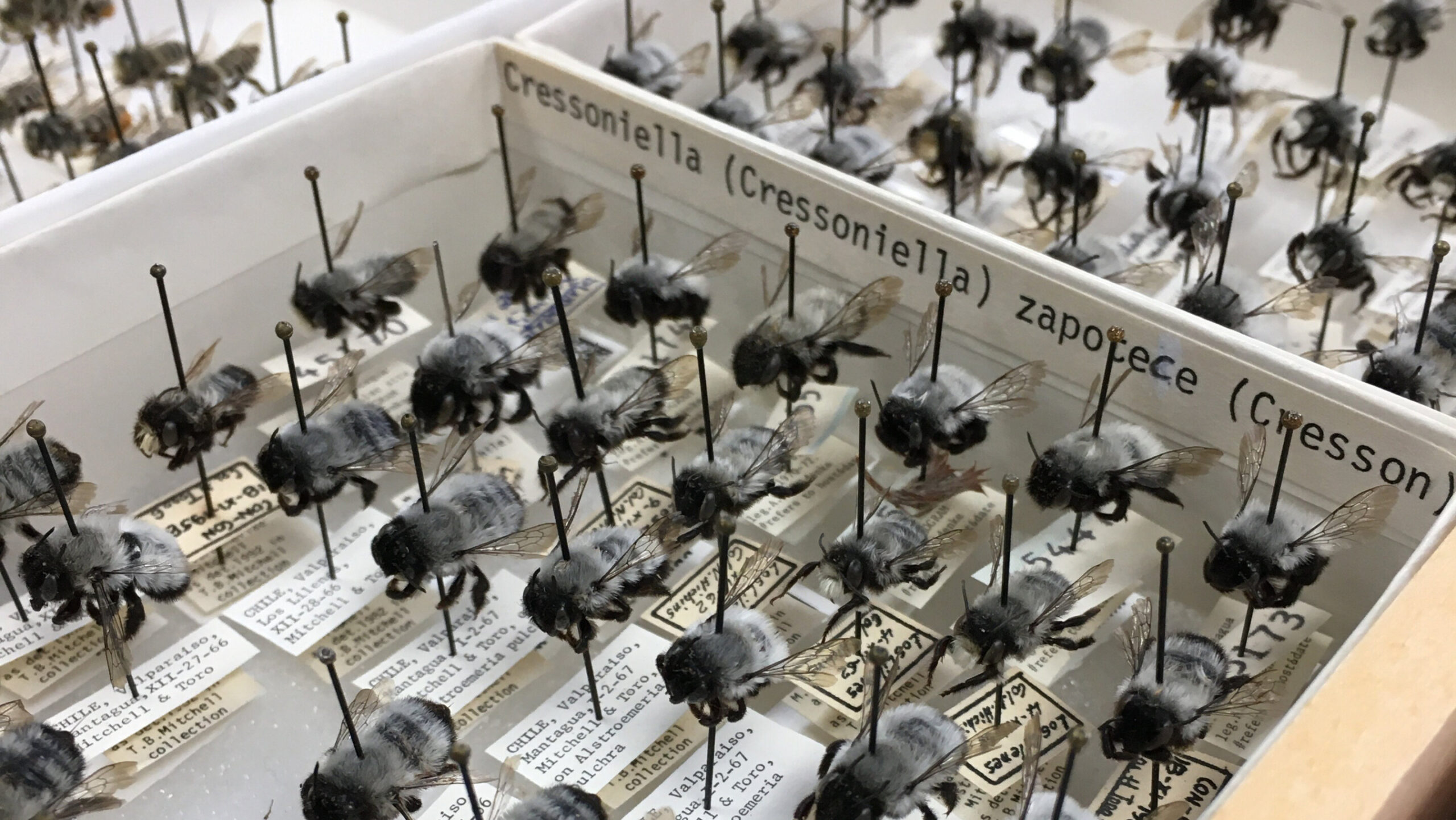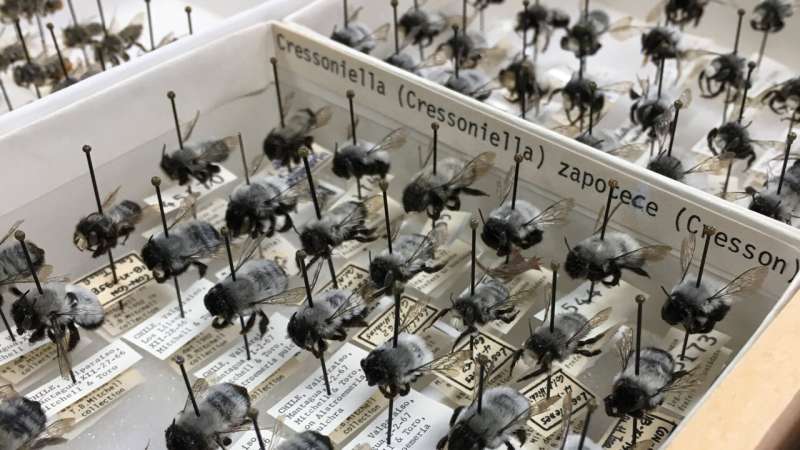

What happens to bee populations in areas of massive human population growth like Wake County, North Carolina, where the population is more than 16 times greater than it was at the turn of the 20th century?
Examining historical museum specimens along with online bee repositories and university bee collections, researchers at North Carolina State University show that bee species richness—the number of different bee species—has varied over the past 118 years, with no clear downward trend emerging over time, said Selina Ruzi, a postdoctoral researcher in biological sciences at NC State and corresponding author of a paper describing the research.
With that good news, though, comes some not-so-great news. The study showed that, of 328 bee species collected in Wake County over the study period (1900-2018), 195 species have not been collected since 1969; many of these missing species are bees that nest underground.
“Our hypothesis was that bee species richness would decline in Wake County over time due to effects from urbanization and population growth,” Ruzi said. “But, while we saw some variance, there was no clear trend over time. It’s hard to know, without a new monitoring program to sample different locations in Wake County, whether the ‘missing’ bee species are really missing or if we’re just not detecting them.”
Burrowing bees could have a hard time in areas with growing populations of humans. Population growth and urbanization bring housing developments, which generally means more concrete in the form of roads and driveways. More housing also means more turfgrass on lawns, which means compacted soils. All of these factors represent impediments for bees that nest underground. Climate change and interactions among bees can also have effects on bee species richness, the researchers say.
“Specialist bee species need pollen from specific plant species to feed their young; bees can’t suddenly switch pollen sources,” said Rebecca Irwin, professor of applied ecology at NC State and co-author of the paper. “If these specific flowers are absent, bees will be absent as well.”
The researchers also noted other collection factors that could contribute to the seemingly missing species.
“The reasons why collecting occurred could affect the representation of species richness,” Irwin said. “A lot of historical collectors were taxonomists, so they would travel to particular places at particular times to look for certain bees. As ecologists, we may be trying to sample a whole area and look at how some aspect of the environment may affect the number of species we find.”
Ruzi noted that all of the bee specimens included in the study were collected by netting; bees caught by other more recent techniques were excluded to reduce any study bias.
The researchers add that going back to museums or historical collections could help fill some gaps in the absence of systematic population studies.
In all, the study reflects a ray of hope amid gloomy reports documenting declining bee populations over the past few decades.
“This study suggests there’s some resilience in bee species to habitat change,” Irwin said. “Yet certain species with certain life history traits are missing. When we think about conservation and what we can do in urban habitats, making sure that there are appropriate places for ground-nesting bees to nest rises to the top of the list.”
The paper, “Bee species richness through time in an urbanizing landscape of the southeastern United States,” is published in the journal Global Change Biology.
More information:
Selina A. Ruzi et al, Bee species richness through time in an urbanizing landscape of the southeastern United States, Global Change Biology (2023). DOI: 10.1111/gcb.17060
Provided by
North Carolina State University
Citation:
Bee species in Wake County, North Carolina—are they missing or just hard to find? (2023, December 11)
retrieved 12 December 2023
from https://phys.org/news/2023-12-bee-species-county-north-carolinaare.html
This document is subject to copyright. Apart from any fair dealing for the purpose of private study or research, no
part may be reproduced without the written permission. The content is provided for information purposes only.





